- Yokohama-shi Top Page
- Living and Procedures
- Community Development and Environment
- Roads
- Safety facilities
- Creating a Road that is Friendly to People
- Street trees in Yokohama
- Major street trees and history of Yokohama
Here's the text.
Major street trees and history of Yokohama
Last Updated November 14, 2024
Yokohama is said to be the birthplace of modern street trees in Japan. It was the beginning of Keio 3 (1867) when each store in Basyamichi planted willows and pine trees in front of the store.
This row of trees was burned down in the Great Kanto Earthquake of 1923 (1923), and is now replaced by Acinile planted after 1977 (1977).
In Basyamichi Square near Kannai Station, there is a monument to the "Modern Road Tree Development Shonochi".
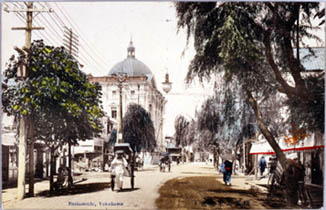
▲ Basyamichi in the late Meiji period [Open Port Memorial Museum Collection]
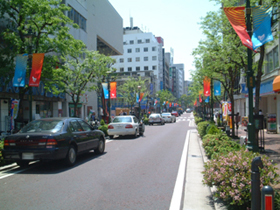
▲ Current Basyamichi
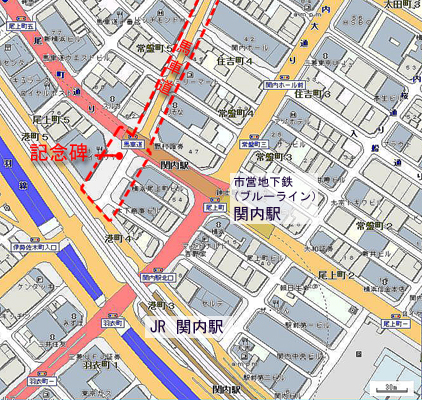
▲ Monument location map
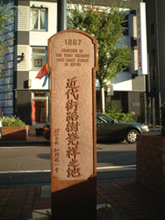
▲ Monument of "Modern Street Trees Launched Shonochi"
This road was created by the design of British H.R. Blanton as a fire prevention measure following the Great Yokohama Fire, which was called the "Porkya Fire" that occurred in Keio 2 (1866).
It is a modern and fine road at the time, with a roadway of 12m in the center, a sidewalk of 3m and a tree planting zone of 9 meters on the left and right, and a total road width of 36 meters.
Planting during this period was almost destroyed by the Great Kanto Earthquake, but ginkgo was planted over three years from 1927 due to reconstruction and maintenance.
At present, you can see a row of ginkgo trees that grow finely and have natural tree-shaped stately.
※In 2002, Nihon Odori Avenue received the Ministry of Land, Infrastructure, Transport and Tourism's “Handmade Hometown Prize (outside site)” (local development section) and the fifth “Kikuchi Road Environment Award” sponsored by the conservation Association of Road Greenery in 2007, along with the Ministry of Land, Infrastructure, Transport and Tourism (Zou-no-Hana-District, Transport and Tourism) in 2011.
※The row of ginkgo trees here was designated as "landscape important trees" based on the Landscape Act in 2011. .
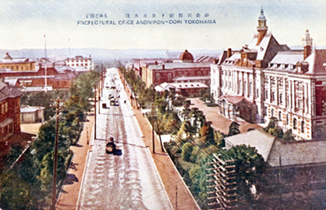
▲ Around 1920 (1920)
[Open Port Memorial Museum Collection]
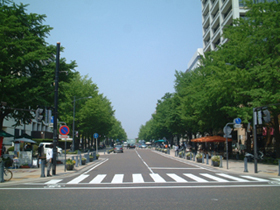
▲ Current Nihon Odori Avenue (Ginkgo)
It is a row of ginkgo trees in front of Yamashita Park, a typical park in Yokohama.
These rows of ginkgo trees were also planted in 1928 due to the reconstruction project of the Great Kanto Earthquake. This area is planted after reclaiming the rubble of a collapsed building, and it was a difficult environment for trees to grow, but today it has grown greatly and has become one of the tourist attractions in Yokohama.
※In 1986, Yamashita-koen-mae was selected as one of Japan's Top 100 Roads (established by the Ministry of Construction (currently the Ministry of Land, Infrastructure, Transport and Tourism) and the Road Day Executive Committee).
※The row of ginkgo trees here was selected as "100 New Japanese Street Trees" (Yomiuri Shimbun) in 1994.
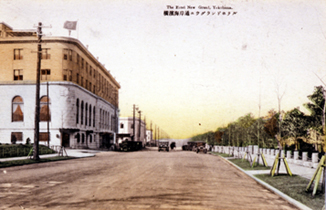
▲ In the early Showa period, shortly after planting [Open Port Memorial Museum Collection]
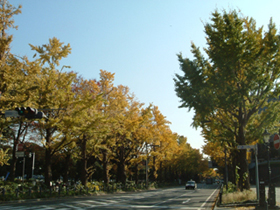
▲ Current Yamashita-koen-mae (Ginkgo)
Inquiries to this page
Road and Highway Bureau Road Department Facilities Division
Telephone: 045-671-2786
Telephone: 045-671-2786
Fax: 045-550-3376
Email address: do-shisetsu@city.yokohama.lg.jp
Page ID: 352-429-757







